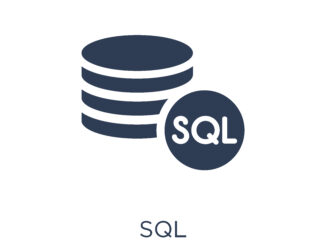Implementing Data Level Security on ClickHouse: Complete Technical Guide
Introduction
Data level security in ClickHouse is a critical component for enterprise deployments requiring granular access control and data protection. This comprehensive guide explores the implementation of row-level security (RLS), column-level permissions, and advanced security features to ensure your ClickHouse deployment meets stringent compliance and security requirements.
Understanding ClickHouse Security Architecture
Multi-Layered Security Model
ClickHouse implements a sophisticated security architecture that operates at multiple levels:
- Network-level security through SSL/TLS encryption
- Authentication and authorization mechanisms
- Database-level access controls
- Table and column-level permissions
- Row-level security policies
Security Context Hierarchy
The security model follows a hierarchical approach where permissions cascade from users to roles to specific database objects, ensuring comprehensive access control across all data assets.
Row-Level Security (RLS) Implementation
Creating Security Policies
Row-level security in ClickHouse allows you to restrict which rows users can access based on predefined conditions:
-- Create a security policy for tenant isolation
CREATE ROW POLICY tenant_isolation ON sales_data
FOR SELECT USING user_tenant_id = tenant_id
TO tenant_user_role;
-- Multi-condition RLS policy
CREATE ROW POLICY department_access ON employee_data
FOR SELECT USING department = currentUser() OR hasRole('hr_manager')
TO department_users;
Policy Management Best Practices
- Use descriptive policy names that reflect business logic
- Implement least-privilege principles
- Regularly audit and update policies
- Test policies thoroughly before production deployment
Performance Optimization for RLS
-- Optimize RLS with proper indexing CREATE INDEX idx_tenant_id ON sales_data (tenant_id) TYPE minmax; -- Use materialized views for complex RLS scenarios CREATE MATERIALIZED VIEW secure_sales_view ENGINE = MergeTree() ORDER BY (date, tenant_id) AS SELECT * FROM sales_data WHERE tenant_id = getCurrentTenantId();
Column-Level Security
Implementing Column Permissions
ClickHouse provides granular column-level access control through role-based permissions:
-- Create role with specific column access CREATE ROLE analyst_role; -- Grant column-specific permissions GRANT SELECT(customer_id, order_date, total_amount) ON orders TO analyst_role; -- Revoke sensitive column access REVOKE SELECT(credit_card_number, ssn) ON customers FROM analyst_role;
Data Masking and Anonymization
-- Create view with masked sensitive data
CREATE VIEW masked_customer_data AS
SELECT
customer_id,
concat(substring(name, 1, 2), '***') AS masked_name,
concat('***-**-', substring(ssn, -4)) AS masked_ssn,
email
FROM customers;
-- Grant access to masked view instead of raw table
GRANT SELECT ON masked_customer_data TO data_analyst_role;
Advanced Authentication Methods
LDAP Integration
Configure ClickHouse to authenticate against enterprise LDAP directories:
<users>
<ldap_users>
<user_dn_detection>
<base_dn>ou=users,dc=company,dc=com</base_dn>
<search_filter>(&(objectClass=user)(sAMAccountName={user_name}))</search_filter>
</user_dn_detection>
<role_mapping>
<base_dn>ou=groups,dc=company,dc=com</base_dn>
<search_filter>(&(objectClass=group)(member={user_dn}))</search_filter>
<attribute>cn</attribute>
</role_mapping>
</ldap_users>
</users>
Kerberos Authentication
Enable Kerberos for enterprise single sign-on:
<users>
<kerberos_users>
<principal_to_user_name_regexp>
<pattern>^([^/]+)(/[^@]+)?@[A-Z0-9.-]+[A-Z]$</pattern>
<replacement>\1</replacement>
</principal_to_user_name_regexp>
</kerberos_users>
</users>
Encryption and Data Protection
Encryption at Rest
Configure ClickHouse for data encryption at rest:
<encryption>
<key_command>/path/to/key/script</key_command>
<current_key_id>1</current_key_id>
</encryption>
SSL/TLS Configuration
Secure client-server communications:
<openSSL>
<server>
<certificateFile>/etc/clickhouse-server/server.crt</certificateFile>
<privateKeyFile>/etc/clickhouse-server/server.key</privateKeyFile>
<dhParamsFile>/etc/clickhouse-server/dhparam.pem</dhParamsFile>
<verificationMode>relaxed</verificationMode>
<loadDefaultCAFile>true</loadDefaultCAFile>
<cacheSessions>true</cacheSessions>
<disableProtocols>sslv2,sslv3</disableProtocols>
<preferServerCiphers>true</preferServerCiphers>
</server>
</openSSL>
Audit Logging and Compliance
Query Audit Configuration
Enable comprehensive audit logging:
<query_log>
<database>system</database>
<table>query_log</table>
<partition_by>toYYYYMM(event_date)</partition_by>
<flush_interval_milliseconds>7500</flush_interval_milliseconds>
</query_log>
<query_thread_log>
<database>system</database>
<table>query_thread_log</table>
<partition_by>toYYYYMM(event_date)</partition_by>
<flush_interval_milliseconds>7500</flush_interval_milliseconds>
</query_thread_log>
Security Event Monitoring
-- Monitor failed authentication attempts
SELECT
event_time,
user,
client_hostname,
exception
FROM system.query_log
WHERE exception LIKE '%Authentication failed%'
ORDER BY event_time DESC;
-- Track privilege escalation attempts
SELECT
event_time,
user,
query,
exception
FROM system.query_log
WHERE query LIKE '%GRANT%' OR query LIKE '%CREATE USER%'
ORDER BY event_time DESC;
Multi-Tenant Security Architecture
Tenant Isolation Strategies
Implement robust tenant isolation using database-level separation:
-- Create tenant-specific databases CREATE DATABASE tenant_001; CREATE DATABASE tenant_002; -- Create tenant-specific users CREATE USER tenant_001_user IDENTIFIED BY 'secure_password'; CREATE USER tenant_002_user IDENTIFIED BY 'secure_password'; -- Grant database-specific access GRANT ALL ON tenant_001.* TO tenant_001_user; GRANT ALL ON tenant_002.* TO tenant_002_user;
Shared Table Multi-Tenancy
For shared table architectures, implement tenant-aware security:
-- Create tenant-aware RLS policy
CREATE ROW POLICY shared_table_isolation ON shared_data
FOR ALL USING tenant_id = getTenantId()
TO tenant_users;
-- Function to get current tenant context
CREATE FUNCTION getTenantId() AS () -> (
SELECT tenant_id FROM user_tenant_mapping
WHERE user_name = currentUser()
);
Performance Considerations
Security Policy Optimization
- Index columns used in RLS conditions
- Use materialized views for complex security logic
- Implement caching strategies for frequently accessed security metadata
- Monitor query performance impact of security policies
Resource Management
-- Set resource limits for security-sensitive operations
CREATE SETTINGS PROFILE security_profile SETTINGS
max_memory_usage = 1000000000,
max_execution_time = 300,
max_rows_to_read = 1000000;
-- Apply profile to security-sensitive roles
ALTER ROLE sensitive_data_role SETTINGS PROFILE security_profile;
Monitoring and Alerting
Security Metrics Dashboard
Create comprehensive monitoring for security events:
-- Monitor RLS policy effectiveness
SELECT
policy_name,
count() as policy_applications,
avg(query_duration_ms) as avg_duration
FROM system.row_policy_usage_log
GROUP BY policy_name
ORDER BY policy_applications DESC;
-- Track authentication patterns
SELECT
user,
client_hostname,
count() as login_count,
max(event_time) as last_login
FROM system.session_log
WHERE event_type = 'LoginSuccess'
GROUP BY user, client_hostname
ORDER BY login_count DESC;
Automated Security Alerts
-- Alert on suspicious query patterns
SELECT
user,
query,
event_time
FROM system.query_log
WHERE query RLIKE '(DROP|DELETE|TRUNCATE).*'
AND user NOT IN ('admin', 'maintenance_user')
AND event_time > now() - INTERVAL 1 HOUR;
Best Practices and Recommendations
Security Policy Design
- Principle of Least Privilege: Grant minimum necessary permissions
- Regular Access Reviews: Audit user permissions quarterly
- Separation of Duties: Implement role-based access controls
- Defense in Depth: Layer multiple security controls
Implementation Guidelines
- Test security policies in development environments
- Document all security configurations and policies
- Implement automated security testing
- Maintain security configuration version control
Compliance Considerations
- GDPR compliance through data anonymization
- SOX compliance via audit logging
- HIPAA compliance using encryption and access controls
- PCI DSS compliance through data masking
Troubleshooting Common Issues
Permission Debugging
-- Check user permissions SHOW GRANTS FOR username; -- Verify RLS policy application SELECT * FROM system.row_policies WHERE database = 'target_db'; -- Debug authentication issues SELECT * FROM system.users WHERE name = 'problematic_user';
Performance Troubleshooting
- Monitor query execution plans for security overhead
- Analyze RLS policy impact on query performance
- Optimize indexes for security-filtered queries
Conclusion
Implementing comprehensive data level security in ClickHouse requires careful planning and execution across multiple security layers. By following the strategies outlined in this guide—from row-level security and column permissions to advanced authentication and audit logging—organizations can build robust, compliant, and performant data security architectures.
The key to successful implementation lies in understanding your specific security requirements, thoroughly testing all configurations, and maintaining ongoing monitoring and optimization of your security policies. With proper implementation, ClickHouse’s security features provide enterprise-grade protection for even the most sensitive analytical workloads.
Further Reading:
ClickHouse ReplacingMergeTree Explained
Building Fast Data Loops in ClickHouse®
Connecting ClickHouse® to Apache Kafka®
What’s a Data Lake For My Open Source ClickHouse® Stack
ColumnStore vs. Modern Data Warehousing
References:
Data Compliance: What You Need to Know in 2025
You might also like:
- How are Data Compression Algorithms implemented in ClickHouse?
- ClickHouse Functions: Deep Dive into ClickHouse User Defined Functions (UDFs)
- ClickHouse Troubleshooting: Avoiding Excessive Disk Swaps
- Overview of Key Features of ChistaDATA’s ClickHouse DBaaS
- How to implement Real-time Stream Processing in ClickHouse with Kafka


